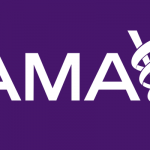Although telehealth use is growing among older adults, patients still have fears about privacy and care quality over video visit.
Adult patients over age 50 are warming to telehealth, with one in four patients saying they had used telehealth to access care between March and June of 2020, the National Poll on Healthy Aging revealed.
That is up from the only 4 percent of patients over age 50 who said the same in a similar 2019 National Poll on Healthy Aging, which like the 2020 poll was conducted by University of Michigan’s Institute for Healthcare Policy and Innovation (IHPI) with support from AARP and Michigan Medicine.
This surge in telehealth access and satisfaction can largely be credited to the novel coronavirus, which pushed individuals to lean on digital technologies to access healthcare.
Want to publish your own articles on DistilINFO Publications?
Send us an email, we will get in touch with you.
From individual fears about accessing healthcare in person to temporary moratoria on in-person care for non-urgent or elective procedures to increased flexibilities for telehealth reimbursement, this type of technology has seen a boom as a result of the COVID-19 pandemic.
And what has come of that is an older adult population that quickly became keen on remote patient care access, the survey of 2,047 patients over age 50 showed.
“This has been an extraordinary time for the telemedicine movement, and these poll results show just how powerful this ‘trial by fire’ has been,” said Jeff Kullgren, MD, MPH, MS, associate director of the poll.
For one thing, more patients over age 50 are using telehealth than ever before, the 2020 poll showed. By June, 30 percent of patients had participated in a telehealth visit at some point in their lives. Half of those patients said they made the switch because their appointment was canceled or postponed per government guidelines, while 30 percent of those using telehealth between March and June said it was the only option when they tried to make an appointment.
Only 15 percent of those who had used telehealth at the beginning of 2020 said they accessed it because they had personal concerns related to COVID-19, although 45 percent of all respondents did say the virus piqued their interest in the technology.
Patient fears or concerns about using telehealth have also begun to disappear. In 2019, 49 percent of older adults were worried about their privacy during a telehealth visit, which has gone down to only 24 percent of patients this year.
Thirty-nine percent of patients were worried they’d have trouble hearing or seeing their doctor during a video visit in 2019, which shakes out to only 25 percent of patients today.
By and large, older adult patients are satisfied with telehealth, with 64 percent of patients saying they are at least somewhat comfortable with the technology. Seventy-two percent are interested in using the tool to connect with a provider they have already seen before, and 63 percent said telehealth could be useful to them for some follow-up care.
That all said, telehealth is not an entirely perfect care access solution for patients over 50, with most saying there are times the technology is not ideal.
“But our data also highlight areas of continued concern for patients that need to be addressed,” added Kullgren, who is also a health care researcher and a primary care provider who uses telehealth with his patients at the VA Ann Arbor Healthcare System.
About two-thirds of patients said they would not use telehealth to visit with a provider they had never seen before, and the same amount said telehealth care quality still is not as good as in-person care. These findings are similar to those in the 2019 poll.
Although the survey administrators did not have specific recommendations for how healthcare providers could overcome those two hurdles, they did explain that understanding patient sentiment toward telehealth is useful for designing future policy.
“These findings have implications for the health providers who have ramped up telehealth offerings rapidly, and for the insurance companies and government agencies that have quickly changed their policies to cover virtual visits,” said Lorraine Buis, PhD, MSI, a health information technology researcher at U-M who helped design the poll and interpret its results.
“Tracking change over time could inform future efforts, and highlights the need for much more research on concerns, barriers and optimal use of telehealth by older adults.”
Source: Patient Engagement Hit








